New planets have flattened shapes 'like Smarties', study finds
- Published
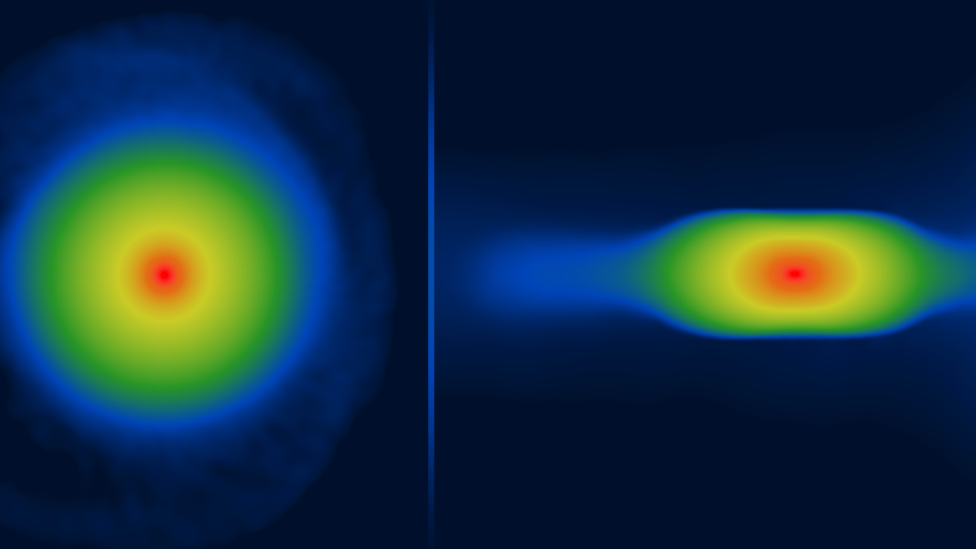
Simulated young planet as viewed from the top (left) and from the side (right)
New planets formed around stars have flattened shapes "similar to Smarties", scientists have found.
Researchers at the University of Central Lancashire (Uclan) in Preston used computer simulations to model the formation of planets.
It is the first time scientists have looked at the shape of newborn planets in simulations as they form.
They had "always assumed they were spherical" and were surprised to find they had a similar shape to the sweets.
The team used a concept in astrophysics known as "the theory of disk instability" - where planets form in short timescales from the breaking up of large rotating discs of dense gas and dust orbiting young stars.
Dr Dimitris Stamatellos, reader in astrophysics at Uclan, said it showed young planets were oblate spheroids - spheres squashed from the top and the bottom but bulging in the middle.
"We have been studying planet formation for a long time but never before had we thought to check the shape of the planets as they form in the simulations," he said.
"We had always assumed that they were spherical.
"We were very surprised that they turned out to be oblate spheroids, pretty similar to Smarties."
He said technically, no planet was fully spherical.
Jupiter's flattening, for example, was about 6%, while Saturn is 10%, and Earth was almost spherical at just 0.3%, he said.
He said young planets were much flatter and somewhere in the region of 90%.
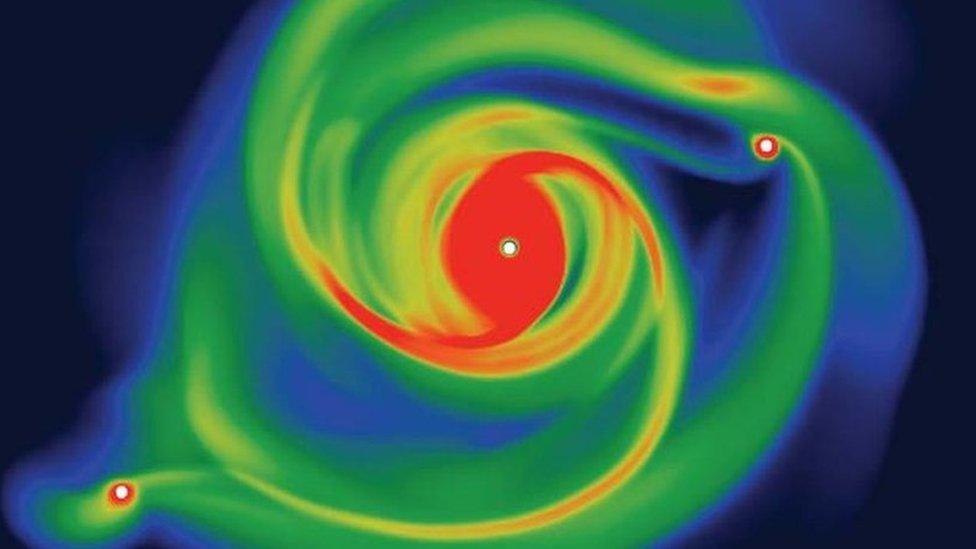
Simulation of a young planet forming
The team's study, published in the journal Astronomy & Astrophysics Letters, was based on investigating the shapes of young planets and how they grow to become gas giants like Jupiter.
They said the findings had important implications, particularly when viewing planets through a telescope as their shapes would vary depending on the viewing angle.
The researchers added that observational confirmation of the flattened shape of young planets could also help answer a key question about how they form.

Why not follow BBC North West on Facebook, external, X, external and Instagram, external? You can also send story ideas to northwest.newsonline@bbc.co.uk
- Published28 June 2023
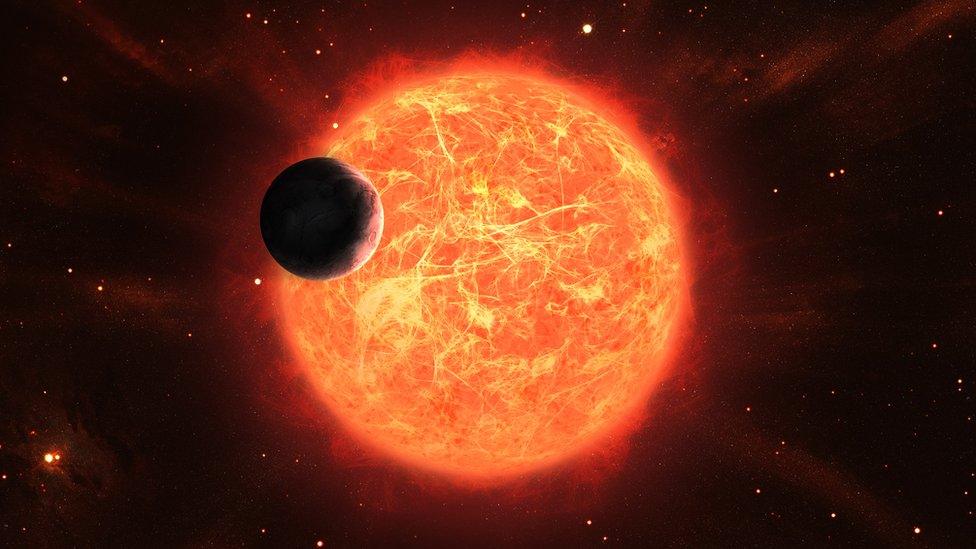
- Published30 September 2023
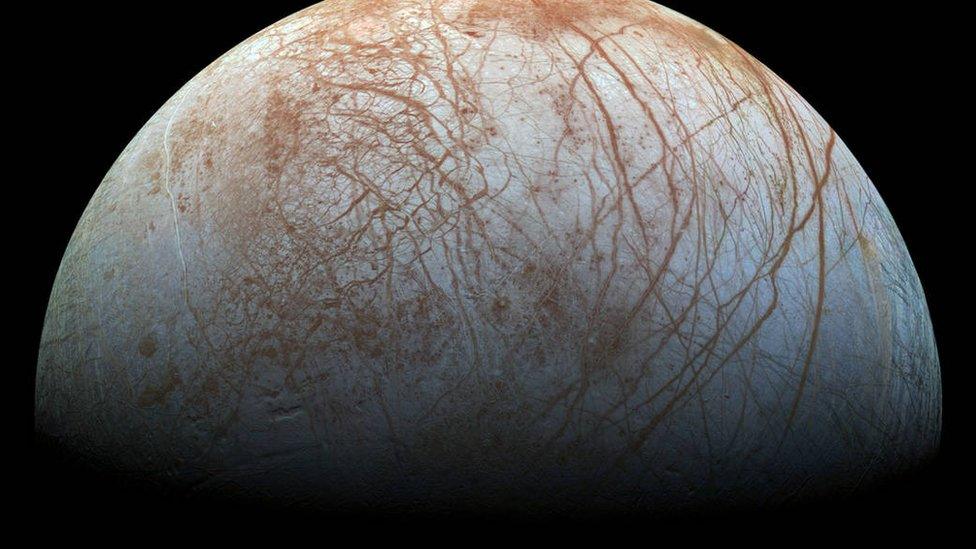
- Published29 November 2023
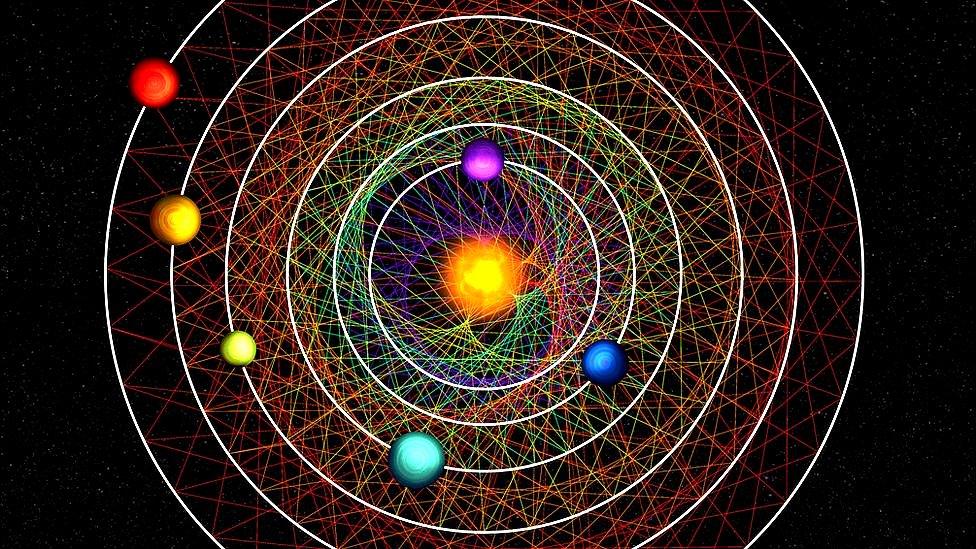
- Published22 March 2023